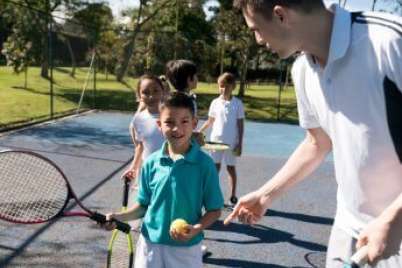
Keeping kids safe in sport: Canada’s Universal Code of Conduct
It seems obvious that children should be kept safe from abuse, discrimination, and bullying when playing sports. However, as shown by the number of abuse cases that have come to light in recent years, children’s safety in sport hasn’t always been guaranteed in Canada.
The Canadian government moved to address the problem in 2021 by helping to establish the Independent Safe Sport Mechanism (ISSM). The main job of the ISSM is to oversee the implementation of the Universal Code of Conduct to Prevent and Address Maltreatment in Sport (UCCMS).
If you’re a parent with a child playing a sport, or a coach or volunteer working in community sport, it’s important to know about the UCCMS. Unfortunately, it’s 16 pages long and written in legalese, so it isn’t a light read.
In the interests of making the UCCMS easier to understand, the main section and ideas are summarized below. This summary shouldn’t be used as a legal reference, but simply a basic introduction to the UCCMS.
Section 1.0 General Principles and Commitment
The first section of the UCCMS says all participants in sport should have the reasonable expectation that sport will be accessible, inclusive, and respectful of their personal goals. It also says it should be free from all forms of maltreatment.
It outlines a few principles to help people to understand what makes maltreatment and how it should be sanctioned. It defines terms and concepts such as physical maltreatment, psychological maltreatment, and sexual maltreatment, among many others.
This section also stipulates that adults working with children and youth have a duty to prevent or mitigate opportunities for misconduct and maltreatment. It also says that people in positions of trust and authority have a duty to make strategies to recognize systemic bias and unconscious bias, and to respond quickly to discriminatory practices.
“All Participants in sport can expect to play, practice and compete, work, and interact in an environment free from Maltreatment”
–Universal Code of Conduct to Prevent and Address Maltreatment in Sport
Section 2.0 Maltreatment
The second section says adults in positions of trust and authority are responsible for knowing what represents maltreatment. The definition of maltreatment is given as “volitional acts that result in harm or the potential for physical or psychological harm.” In identifying instances of maltreatment, it isn’t necessary to know exactly which category of maltreatment is being witnessed or reported. It is enough simply to know whether the conduct falls into one or more categories of maltreatment.
This section says sport administrators or other decision-makers are in violation of the code if they place participants in situations that make them vulnerable to maltreatment. For example, this includes instructing an athlete and coach to share a hotel room, or hiring a coach who has a past history of maltreating athletes.
The second section then goes into detailed descriptions of each type of maltreatment, just in case anyone has any doubts as to what actions and behaviors constitute physical, psychological, and sexual maltreatment. It also defines behaviors such as “grooming” of young athletes.
Importantly, this section specifies that any effort made by adults to interfere or manipulate the process of reporting maltreatment may result in their being sanctioned, regardless of whether they themselves participated in any maltreatment of athletes.
Finally this section specifies that adults have a legal duty to report any instances of athlete maltreatment. Adults who fail to report actual or suspected maltreatment to law enforcement or child protection services are subject to disciplinary action under the UCCMS. They aren’t required to prove whether the reports are true; they’re only required to report in good faith.
Section 3.0 Sanctions
The third and final section of the UCCMS outlines what actions will be taken against anyone found guilty of abusing athletes. Depending on the type and degree of maltreatment, sanctions might include verbal or written warnings, education, probation, temporary suspension, being barred from some coaching duties, or complete lifetime ban from participating in sport in any way.
In determining sanctions, sport authorities are asked to consider a variety of factors. These include what kind of power relationships exist between adults and athletes, the ages of the people involved, and several other considerations. If severe enough, just one factor may be enough to result in sanctions against the abuser, and a combination of several factors may justify elevated or combined sanctions.
If someone such as a coach is facing charges for any UCCMS violation that involves criminal law, such as sexual abuse, the automatic sanction should be temporary suspension until the case is resolved.
At the end of the UCCMS process and investigation, a summary of the final outcome or decision must be published. A searchable database or registry must be maintained that lists those individuals who have been sanctioned. The goal is to ensure that everyone involved in sport will know who has breached the UCCMS and who is ineligible to be involved in sport.
Just a summary
Reminder, this is only a brief summary of the full 16-page UCCMS, so it should not be taken as an authoritative legal text. For full details of all the definitions of maltreatment (abuse), the sanctions involved, and the duty to report suspected or observed abuse, be sure to refer to the original UCCMS document [PDF]. For anyone involved in Canadian sport, this is an important task and responsibility.






